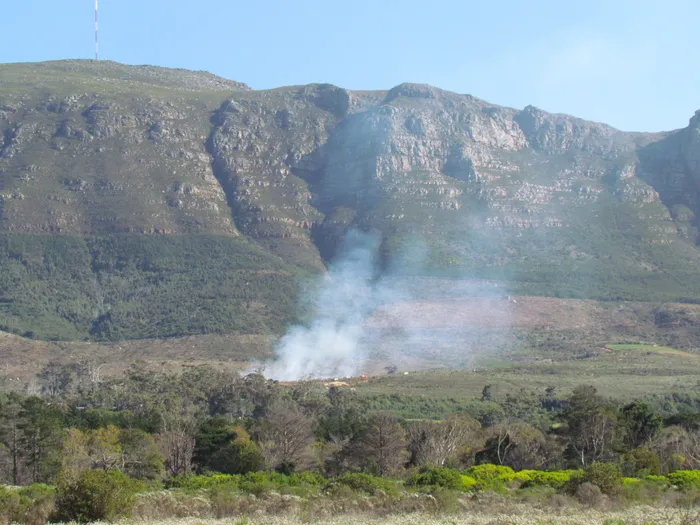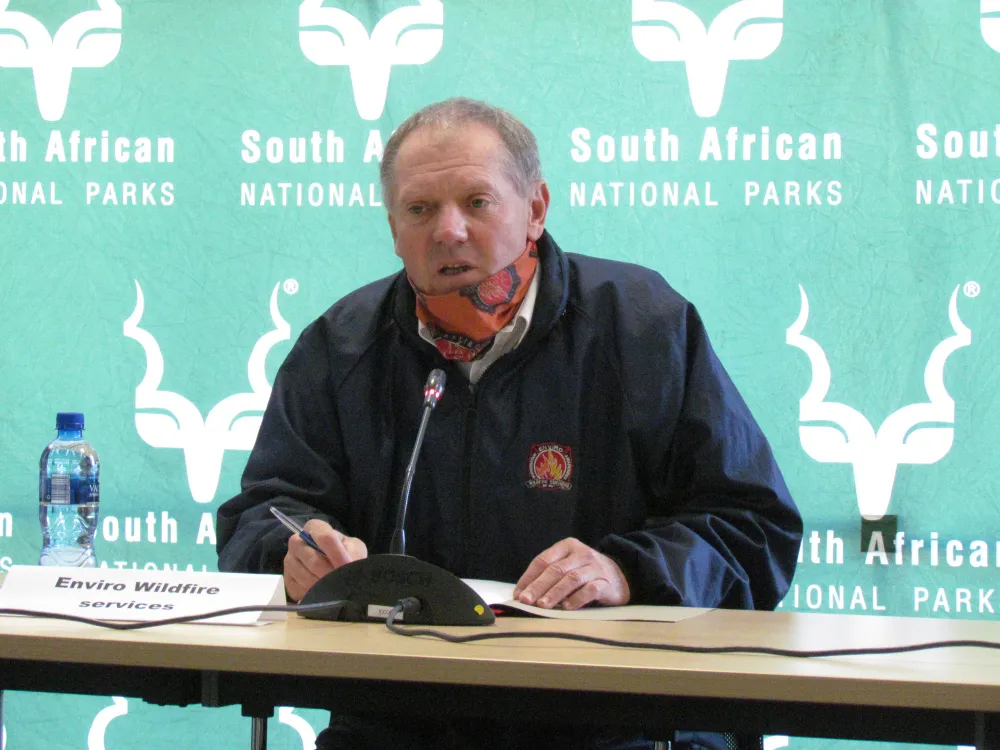Fear of veld fires in Tokai

A controlled burn was taking place on the mountain slopes above Tokai last week.
Piles of slash above Tokai could fuel a firestorm like the one that swept across Table Mountain earlier this year, say residents in the area.
SANParks appointed Enviro Wildlife Services (EWS) to do an independent investigation into the cause of the three-day fire, which started on the lower slopes of Devil’s Peak on Sunday April 18, and last week, Diep River wildfire forensic expert Rob Erasmus presented his findings, noting that not only had the fire been set maliciously but it had been fuelled by high winds, low humidity and plenty of dry vegetation.
The primary reason for property loss was windblown embers landing on thatch roofs, pine and palm trees, ivy, leaves in gutters, setting them alight and resulting in buildings catching on fire.
During the release of the fire report at the Table Mountain National Park (TMNP) new headquarters in Tokai last week, a controlled burn was taking place on the nearby slopes.
Mr Erasmus noted that several boxes had to be ticked before such burns - which reduce the threat of fire by getting rid of accumulated slash - could be done. Among other things, there are only a limited number of available days with suitable weather conditions for the burns; no burning can happen on weekends and public holidays; objections from the public can stop them; and they can’t happen too close to the urban edge.
Nicky Schmidt, chairwoman of the Parkscape volunteer group, is relieved to see that fuel-reduction burns have started, but she worries whether there will be a big enough window to burn all the slash on the slopes before the drier summer months.
“The sheer volume of slash/fuel from alien hacking on the mountain poses a huge fire risk, which, by summer, will be tinder dry,” she said.
“To address this wildfire issue, Parkscape and its partners will be undertaking a fire-awareness drive as we move towards summer on what homeowners who live on the urban edge can and should be doing to protect their properties from what have now become inevitable wildfires,” said Ms Schmidt.
And she said fires that were started deliberately in the Tokai veld each year were another cause for concern. There were more than 20 of those between late 2017 and 2018, she said.
TMNP spokeswoman Babalwa Dlangamandla said six fires had been started deliberately in the lower Tokai area from April last year to March this year
Most of the fire-breaks in the park are about 20m wide, but Craig Mincher lives about three metres from the foot-and-cycle path at Tokai Park bordering Forest Row, and he fears he will have a very hot front-row seat if a fire breaks out in his neck of the woods.
“The fire on Devil’s Peak has shown what could happen. If we have another hot day and a northerly wind, we have a serious situation,“ said Mr Mincher.
He has sent numerous emails to SANParks since 2018 requesting a wider fire-break but has received no official response. Mr Mincher and about 14 neighbours have submitted their request as part of the Tokai Cecilia Management Framework review process.
Ms Dlangamandla said the remainder of the pine plantation to the east of Dennedal Road, near where Mr Mincher lives, had not yet been handed over by MTO (Mountain to Oceans) Forestry and was still under their management until the lease expires in 2025.
Tokai Park, previously known as "Tokai Forest", is a small wing, about 600 ha, of the greater Table Mountain National Park. The area is made up of two sections: upper and lower Tokai Park. Lower Tokai Park is flat and characterised by the threatened Cape Flats sand fynbos. The upper slopes are home to the critically endangered peninsula granite fynbos, peninsula sandstone and Afromontane forest. Tokai Park has over 110 plant species threatened with extinction or extinct in the wild and restored at Tokai.
Zwaanswyk Association of Property Owners chairman Rob Tiffin recalls the “big fire” that roared across the south peninsula mountains in early 2015 (“On the trail of a blaze”, Bulletin March 26, 2015) and how the wind and intensity of the fire picked up burning branches and embers, specifically from pines, which were blown towards houses.
Last year, the residents cleared alien vegetation in the blocks next to Zwaanswyk and looked after their fire-break.
Ms Dlangamandla said that fire-break was maintained annually with the next maintenance scheduled to start from October and due to be completed by mid-December.
Mr Tiffin said the cleared vegetation was stacked and ready to burn, which they hope will take place in the next few months.
“We all like trees, but we’re living alongside a nature reserve. We must respect the land and get back to fynbos as quickly as possible. The safer it will be for all of us.”


